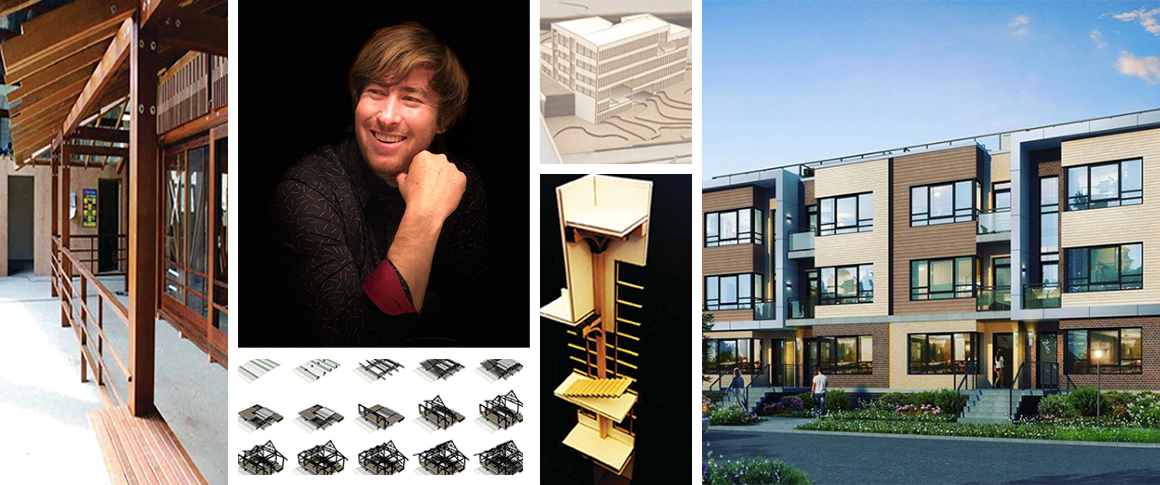Ryn Burns, RA, LEED GA, Design Director at MG2 Design and board member of Black Land Ownership, highlights the importance of engaging and supporting diverse narratives to improve the built environment, as well as the best remote work tools, the benefits of becoming licensed, and his personal testing experience.
Why did you want to become an architect?
I have always been excited by spatial problem-solving and place-making—from forts and treehouses, to origami and skateboard ramps.

Prep for the ARE With NCARB’s Free Practice Exams
Studying for the ARE? Use NCARB’s six free practice exams—one full-length exam per division—to prepare. You can access the practice exams in the “exam” section of your NCARB Record.
In terms of licensure, I was on the fence for years, oscillating between an academic and professional career path. Eventually, I realized that I had spent years—and enough money to buy a house—on my education, and that I wanted to earn the commensurate professional accreditation.
What strategy did you use to pass all ARE 5.0 divisions in just nine months?
I set aggressive deadlines and relied on practice tests with a focused review on missed questions. I also made a lot of my own flash cards. It was hugely motivational that my firm, MG2, was highly supportive of licensure, provided resources, and built incentives into my contract. Check out my recent LinkedIn article ARE’s on an Accelerating Schedule, which dives into my examination journey and implemented strategies a bit more.
We know you’re an advocate for equitable change in the profession, including sustainability, preservation, and reuse. Why should others in the field be invested in this topic?
Sustainable education is a limited resource. Because of this, increasing access to training and education is imperative, especially among historically disadvantaged communities. Preservation and reuse are both loaded topics. What we preserve, for whom, and how are questions tied to the way societies encode and perpetuate culture through buildings. Expanding and advocating for the dialogue to be more inclusive and critical will allow our cities to become more diverse and equitable living repositories of our collective cultural memories.
As a board member of Black Land Ownership—a grassroots, community-based organization focused on centralizing resources, information, and funds for Black people interested in buying land—I continually work on ways to increase education and knowledge sharing around issues of systemic racism, as they apply to ownership and the built environment we live in. Currently, the Black Land Ownership team is working on a future roundtable/lecture series focusing on these topics. The more our profession engages with diverse narratives and responds accordingly, the better our built fabric will represent the society it serves.
How do you balance parenthood and hobbies with your professional life as the design director at MG2?
Architects design complex and phased solutions to multifaceted problems. I have been actively trying to engage in master planning my life using the tools of the profession. Long-term planning with measurable indicators and milestones, intentional and flexible scheduling, aggressive deadlines, opportunistic time management, constant overlaps and negotiations in workflows, and lots of drawing are all part of the process. My personal planning began before the COVID-19 pandemic became a global health emergency, but has become even more focused now, with my zany “wonder children” constantly up in the mix.
How has becoming licensed enhanced your career?
There were immediate tangible benefits, including a promotion and raise that were built into my contract with MG2. Additionally, I have enjoyed an increased sense of responsibility to represent the profession and work in ways that argue for the value of architects. Licensure has also expanded my professional networks and opened new avenues to impact change. I chose to practice architecture in Washington, DC, because the city exemplifies all of the issues I have been focused on throughout my academic and professional career; it’s a city with a rich and varied history.
What’s the best piece of advice you’ve ever received and why?
"Architecture is in the connections. Architecture is the connections." This was a passing remark made by Co-founder and Principal of WORKac Dan Wood, FAIA, LEED AP, during a studio session in my junior year at Princeton. Our profession is not just about being focused on the details. It is also about being focused on how those details relate to the whole and visa versa. This idea is as true of the components that make up buildings as it is of the professionals who form the teams that build them.
